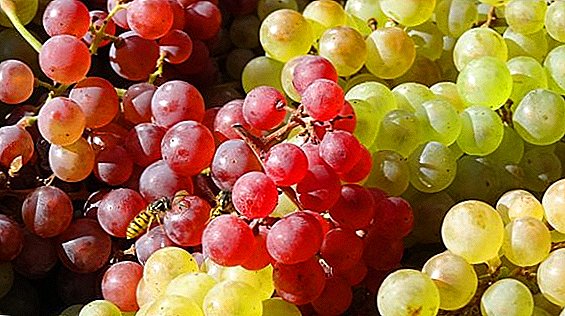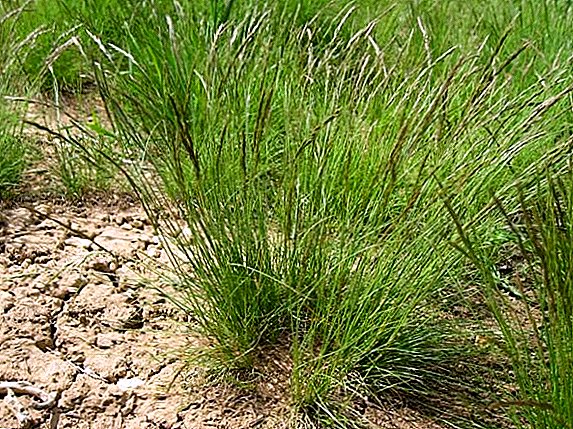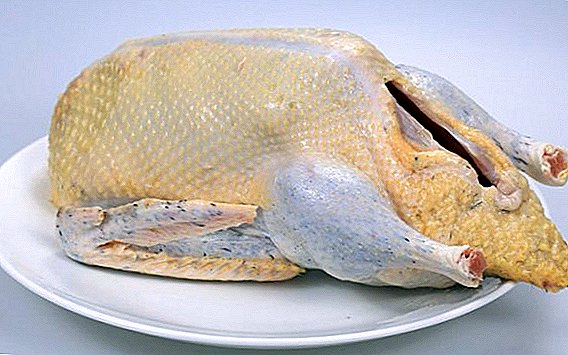 Bug harmful turtle does not settle in houses or country houses, it damages crops in the fields and barns, where the latter can be stored. Growing up grain, it is possible to notice that qualitative characteristics of grain changed. Various influences can spoil the culture, but it is especially bug that can cause serious damage, which will be discussed later in the article.
Bug harmful turtle does not settle in houses or country houses, it damages crops in the fields and barns, where the latter can be stored. Growing up grain, it is possible to notice that qualitative characteristics of grain changed. Various influences can spoil the culture, but it is especially bug that can cause serious damage, which will be discussed later in the article.
Bug of the genus of turtles
Different types of bugs can be easily distinguished from other parasitic individuals. These insects have a body shape that is adapted to the conditions in which they inhabit. Some insects have a flat body, which becomes rounded after the bug is saturated with blood.
Individuals from the family of earth shields and desert bugs have a spherical body shape. Rare species are also rod-shaped. There are bugs, which in appearance very much resemble small turtles, they are called - harmful turtles.  The bugs are hemiptera insects, which were given this name because of the structural features of the front wings. All species of bugs have three pairs of legs that help them move, hold their prey and swim in the water. Each pair of legs developed in varying degrees.
The bugs are hemiptera insects, which were given this name because of the structural features of the front wings. All species of bugs have three pairs of legs that help them move, hold their prey and swim in the water. Each pair of legs developed in varying degrees.
The length of the turtle beetle can be from 10 to 13 mm, the width is usually equal to 6.8-8.8 mm. The body of the insect is convex and oval, covered over with a chitinous shield. Color can vary from black to sand beige.
Did you know? In the Czech system of measures, which was standardized in 1268, and is no longer used, grain was the unit of measure for distance.
Life cycle features
The bug is a flying insect. When the spring comes warm, and the thermometer rises above 14-16 ° C, these pests wake up after wintering. Winter they wait in the gardens and forest plantings, under the leaves that have fallen.  It is noteworthy that they can spend the winter in a place that is located at a distance of 180-195 km from the fields where they feed in the summer. The direction of flight of these insects depends mainly on the direction of the wind.
It is noteworthy that they can spend the winter in a place that is located at a distance of 180-195 km from the fields where they feed in the summer. The direction of flight of these insects depends mainly on the direction of the wind.
Common grain pests are wireworms, granary weevils, thrips, scoop, ground beetle.The phase of laying eggs in bugs, turtles occurs about one and a half weeks after their flight to the field. Insect eggs are laid on young seedlings of grain crops, dry, and weeds. During one season, an adult female can make up to 15 clutches of 14 eggs each.
Bedbugs develop about 35 days, and live on average 10-11 months. Interestingly, food is the same in adults and in young individuals. So such insects are able to destroy large areas of planted areas.
Signs and harm
To determine the presence of bug turtles on wheat or other grain crops can be on a number of grounds:
- In cases where the beetles have not yet scattered across the field, one can see many wilted young shoots of culture in one area.
- Spikes that have been affected by pests have distinctive features. They are deformed and gain a whitish hue.
- The grain itself may change color. Also on it, if you look closely, there will be visible marks after insect bites and weak punctures.
 Insects are able to choose those vegetable crops that have high nutritional value. Such plants quickly grow, and also contain a lot of nutritious juice in their stalk.
Insects are able to choose those vegetable crops that have high nutritional value. Such plants quickly grow, and also contain a lot of nutritious juice in their stalk.Important! This bug is absolutely harmless for humans. After his bite, a mild allergic reaction may occur, but this is the maximum. So if such an insect is noticed in a house or other living space, you should not take any additional measures to destroy the bug, simply release it through the window.After the beetle is saturated with the juice of a grain crop, the grain will already be completely unsuitable for further use. This is due to the fact that in the saliva of the beetle of a harmful bug there is a special enzyme that affects the chemical composition of the food product.
It is almost impossible to distinguish the affected flour from the high-quality dry product, since the enzymes in the dry state lose their quality. But as soon as the flour begins to knead the dough, the substance in the humid environment will start working again and instantly change both the texture and the color of the product.  The economic threshold for bugs of winter bugs that overwinter:
The economic threshold for bugs of winter bugs that overwinter:
- at the tillering stage - 1-2 individuals per 1 sq. m. m .;
- in the period of earing and flowering - 5-10 larvae per 1 square. m .;
- phase of milky ripeness - 5-6 insects per 1 square. m
The threshold may vary depending on the value of the wheat product. Harmful turtles can affect not only wheat, but also oats, barley and even corn. When the growing season comes to an end, the insects move to where the grain is stored, for example, in barns. Part of the bugs are sent to winter, burrowing into the ground, waiting for spring heat.
May beetles, a bear, a mole rat, a locust, voles, hares, moths, tsikadki, mice, shrews, moles, Colorado beetles do great harm.
Pest Control
To know what measures to deal with bugbugs can be applied is extremely important and even necessary:
- It is possible to significantly reduce the amount of food for insects and at the same time protect the high quality of grain through the timely harvesting of grain, quick threshing, and direct combining.
- Weed control and stubbling can also help.
- We should not forget about fertilizer fields, it is especially important to use complex mineral compositions of phosphorus and potassium.
- At the current time there are special preparations - insecticides, which can be sprayed fields. These include: Decis, Fastak, Mavrik, Arrivo, Fury, Fosbecid, etc.

Important! It is recommended to alternate preparations intended to control the bugs of the harmful bug in order to avoid adaptation of adult beetles and larvae to the poison.
Prevention rules
In order to preserve the crop and avoid increasing the insect population by the next season, the fight against the bug will have to start with preventive measures. For this it is recommended:
- Conduct fertilizer soil mineral complexes that contain potassium and phosphorus.
- In the shortest time to harvest. If he stays on the field for a long time, he may be hit by parasites.
- Destruction of weed plants on the foliage of which can be eggs of bugs.
- Additional processing of grain, cleaning it from debris and dirt, drying.
 Experienced farmers recommend planting cereal crops in those areas that are surrounded by planting or forest belt. Trees will become an insurmountable obstacle for this type of insect and will force them to look for another site for their settlement. In addition, the "enemies" of turtles beetles live in the forest plantations: spiders, birds, ants.
Experienced farmers recommend planting cereal crops in those areas that are surrounded by planting or forest belt. Trees will become an insurmountable obstacle for this type of insect and will force them to look for another site for their settlement. In addition, the "enemies" of turtles beetles live in the forest plantations: spiders, birds, ants.Did you know? In rare cases, when no methods of controlling bugs bring the desired effect, landowners who have small areas of grain, produce chickens on the fields. One hen can remove hundreds of insects during the day.By adhering to a number of recommendations, the farmer will be able to provide a full grain crop, not allowing pests to develop their populations on crops.












